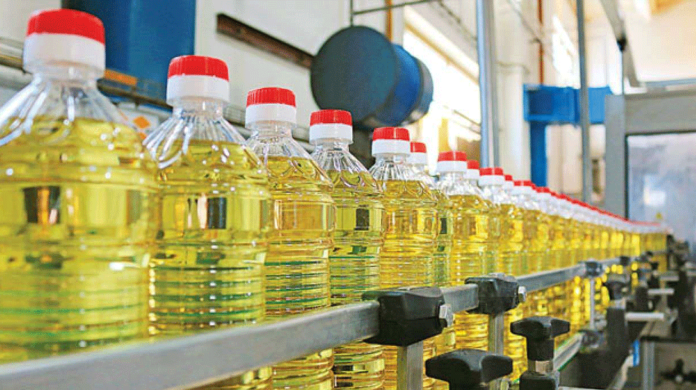After months of soaring prices, cooking oil is expected to see a dip after the international rate for palm oil saw a significant downward trend in late September. Back in June this year, a massive jolt was felt in the country’s utility stores after the price of ghee and cooking oil was hiked by as much as Rs 213 per/KG.
Back in June, the price increase in utility stores was a culmination of prices that had been rising over months. Edible oil was steadily becoming more expensive on the general market and had been hovering at over Rs 500. Utility stores, where the rates are set and subsidised by the government, lock in rates months in advance which is why instead of a steady rise the price saw a sudden surge. The main culprit behind the rise in prices, however, was that Pakistan ’s edible oil market is largely dependent on the import of oilseeds such as palm oil with very little produced locally. This also meant that the depreciation of the rupee made imports more expensive and the added cost was eventually passed down to end consumers.
There are a few important factors in understanding how this market works. Oilseeds are essentially seeds from certain kinds of crops that can be compressed to turn it into cooking oil — the most efficient kind of oilseeds are palm and soy which are also the most commonly used in Pakistan and are the main components of Vanaspati Ghee. However, despite this reliance, Pakistan has been sluggish to grow its own oilseeds and is largely dependent on imports.
Read More: The edible oil saga
This means that since we do not have our own raw materials, much like in the energy sector, the prices of these commodities are heavily pegged to whichever way the tide of the international market turns. The problem in Pakistan is that we have failed to adapt to the change and grow palm and soybeans locally, relying instead on imports. The chief import is soy and palm oil beans that are used to make both cooking oil and Vanaspati Ghee that is commonly used in Pakistani kitchens. Nearly 90% of our oilseed imports are soy and palm. In its recently released report for the first quarter of the financial year 2022, the State Bank of Pakistan included a special section on rising palm and soybean imports. According to the report, Pakistan’s palm and soybean-related imports stood at US$ 4 billion in FY21, rising by 47 percent year-on-year, compared to compound average growth of 12.3 percent in the last 20 years.
With a reduction in palm oil prices in the international market by 35%-40%, the ministry of industries has informed the National Price Monitoring Committee (NPMC) that they are expecting a Rs 20 per kg decrease in the price of ghee and cooking oil at the end of this month.
This is after the prices of palm oil in the international market witnessed a decline from $1,500 per tonne to less than $1,000 per tonne, so the prices registered a decrease of 35%. The prices of palm oil in the international market had touched $1,800 per tonne a few months back and the prices in the domestic market had touched their peaks.
The problem is, however, that this dip is very temporary and could as easily have been an increase in prices as far as Pakistan is concerned. A recent report by the Competition Commission of Pakistan (CCP) pointed out that the rise in international prices of edible oil and oilseeds and exchange rate fluctuations have a key impact on domestic prices, and that local sources have a share of only 14% in the total edible oil consumption.
This also includes crops like cotton, since its seeds are also used as oilseeds particularly to be turned into mulch for livestock feed. The most consumed kind of edible oil on the formal market comes from palm oil. According to an SBP report, total imports of oilseeds and its products surpassed 7 million metric tons in FY21, 87 percent of which comprised palm and soybean. The SBP report also points towards this, saying “ there has been little focus on palm and soybean in Pakistan. Various five year plans since 1955 have highlighted and proposed the need to focus on soybean and other oilseeds. However, lack of consistent policy has prevented oilseed crops, particularly soybean, from taking off.”

























Really thank you for sharing this amazing article.